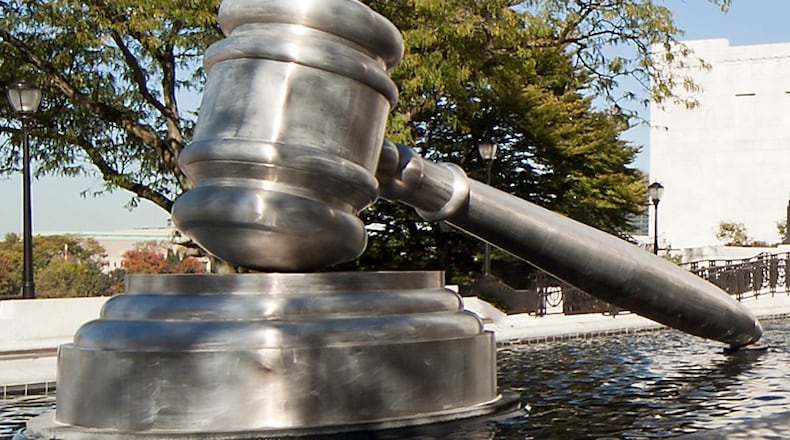Immediate reaction from the Republican majority in the General Assembly was muted, with John Fortney, Senate majority spokesman, saying only that they are “reviewing the opinion.”
Chief Justice Maureen O’Connor, a Republican, again joined the court’s three Democrats in overturning the maps. Some Republican legislators called for O’Connor’s impeachment following her rejection of the previous set of maps, although her term expires at the end of this year.
The court had ordered the commission to draw all-new maps by March 28 — with the help of outside experts and for the first time making the process public.
The commission hired mapmakers Douglas Johnson and Michael McDonald to work with commissioners’ own staff members, and live-streamed the work.
The outside mapmakers’ work wasn’t quite complete on March 28, so they asked commissioners to approve a rough draft and allow them to make technical corrections in the following few hours. Instead, commissioners voted 4-3 to ignore the mapmakers’ work and approved a slightly tweaked version of maps the court already had thrown out.
State Auditor Keith Faber, a Republican, joined the commission’s two Democratic members in opposing the fourth plan. All commission members who supported it are Republican.
In a court filing, Secretary of State Frank LaRose — also a commission member — acknowledged the fourth set of maps had not been seen by any commissioners except Senate President Matt Huffman, R-Lima, and House Speaker Bob Cupp, R-Lima, until shortly before the vote.
Cupp’s and Huffman’s legislative staff have driven the map-drawing process for months. The commission’s Democrats, state Sen. Vernon Sykes of Akron and House Minority Leader Allison Russo of Upper Arlington, have regularly complained they were shut out of previous mapmaking efforts until shortly before plans were brought up for a vote.
The commission’s seventh and final member is Gov. Mike DeWine.
In 2015 and 2018, Ohioans voted in a landslide to amend the Ohio Constitution and create a bipartisan process for drawing congressional and Ohio General Assembly voting districts. That included formation of the Ohio Redistricting Commission.
The court had ordered a de facto reduction in Republican districts by insisting on a proportion of seats that met Ohio voters’ actual preferences in the last few elections. That breakdown is 54% Republican and 46% Democratic. Under the maps in place since 2012, Republicans hold a supermajority in both houses.
The third plan, which the Supreme Court overturned March 16, technically met that standard but made many districts Democratic by razor-thin margins while keeping Republican districts more secure.
The court’s rejection of the fourth plan notes this discrepancy, saying slight changes by Republican mapmakers did nothing to seriously alter it.
As a result of the map-drawing fiasco, state House and Senate races will not appear on the May 3 primary ballot. Those seats will have to be settled in a second primary, yet to be scheduled but possibly Aug. 2.
Election officials have said they need new maps in place by April 20 to hold an Aug. 2 primary. Due to a separate Republican-backed lawsuit, it’s possible the U.S. Sixth District Court of Appeals will intervene by April 20 and impose a set of maps.
The state Democratic Party immediately blamed the delay, and the cost of a second primary, on Republican intransigence, and said it’s time for them to do their jobs and pass fair maps.
“As Ohio Democrats tour the state to talk about the cost of GOP corruption, there’s no clearer example than Republican gerrymandering that is already costing Ohio millions,” state party Chair Elizabeth Walters said in a news release.
CASE DECISION: In League of Women Voters of Ohio v. Ohio Redistricting Comm., the Court ruled a fourth set of Ohio House & Senate district maps unconstitutional and ordered the members of the commission to reconvene and adopt new General Assembly maps. https://t.co/TCnfCvSu3j pic.twitter.com/ByZ3NnlgAk
— Ohio Supreme Court (@OHSupremeCourt) April 14, 2022
About the Author

